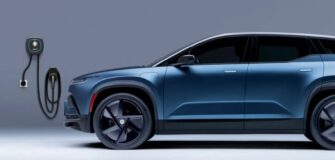Electric Revolution: The Evolution of Electric Cars and Charging Infrastructure

In recent years, the automotive industry has been undergoing a remarkable transformation with the rise of electric vehicles (EVs), marking a significant shift from conventional internal combustion engine (ICE) vehicles. This transition towards electric cars isn’t just about creating a more eco-friendly transportation option; it’s a technological revolution that is reshaping the way we think about mobility and the supporting charging infrastructure.
From Humble Beginnings to Mainstream Appeal: Evolution of Electric Cars
The concept of electric vehicles dates back to the early 19th century, with inventors experimenting with various forms of electric propulsion. However, it was only in the last two decades that EVs gained significant traction. The introduction of the Tesla Roadster in 2008 was a pivotal moment, showcasing that electric cars could be both high-performance and desirable. Tesla’s innovative approach to design, technology, and marketing kickstarted a wave of interest in electric vehicles that prompted traditional automakers to follow suit.
As battery technology improved, electric cars began to offer longer ranges and faster acceleration. The introduction of models like the Nissan Leaf, Chevrolet Bolt, and various offerings from BMW, Audi, and Hyundai solidified electric cars as practical options for daily commuting. The evolution of electric cars was no longer just about reducing carbon emissions; it was about creating vehicles that could rival their gasoline counterparts in every aspect.
Charging Ahead: The Transformation of Charging Infrastructure
One of the most critical components of the electric revolution is the development of charging infrastructure. The transition to electric vehicles demands an extensive and reliable network of charging stations to alleviate “range anxiety” and make EVs feasible for long-distance travel.
In the early stages of the electric revolution, charging infrastructure was limited and mostly consisted of home charging stations. EV owners would charge their vehicles overnight, making use of dedicated charging units installed in garages. However, this approach was not sufficient to support widespread EV adoption, particularly for those who did not have access to private charging facilities.
To address this issue, both governments and private companies started investing in public charging networks. Level 2 charging stations, which provide faster charging compared to home outlets, began appearing in urban centers, shopping malls, and parking lots. Additionally, fast-charging stations, often using the CHAdeMO or CCS standard, started popping up along highways, enabling EVs to regain a significant amount of range in a matter of minutes.
The real game-changer, however, came with the proliferation of high-speed DC fast-charging networks. Tesla’s Supercharger network, initiated in 2012, was a groundbreaking move that gave Tesla owners the ability to embark on long road trips with confidence. Competitors quickly realized the importance of such networks and joined the race to establish their own. These networks utilize cutting-edge technology to provide ultra-fast charging, allowing drivers to recharge their vehicles in about the same time it takes to grab a coffee.
The Road Ahead: Overcoming Challenges and Expanding Horizons
While the electric revolution has made remarkable progress, challenges remain. The cost of electric vehicles, despite decreasing battery prices, is still a barrier for many consumers. Governments around the world are offering incentives to encourage EV adoption, but achieving price parity with gasoline cars is crucial for widespread adoption.
Moreover, enhancing charging infrastructure is an ongoing endeavor. Balancing the convenience of fast charging with the strain on energy grids is a complex challenge. Integration of renewable energy sources, smart grid technology, and battery storage systems are all being explored to make charging infrastructure more sustainable and efficient.
As the electric revolution accelerates, automakers are investing heavily in research and development to create even more advanced EVs with longer ranges, faster charging times, and innovative features. The convergence of electric vehicles with autonomous driving technology promises to reshape the entire transportation landscape, providing cleaner, safer, and more efficient mobility solutions.
In conclusion, the evolution of electric cars and the accompanying charging infrastructure signifies a monumental shift in the automotive industry. From their humble beginnings as quirky eco-friendly alternatives, electric vehicles have evolved into mainstream contenders that combine sustainability with cutting-edge technology and performance. The ongoing developments in charging infrastructure are pivotal in addressing range anxiety and making EVs viable for all types of drivers. As the electric revolution continues to unfold, it’s clear that the future of transportation is electric, and it’s a future that holds great promise for a cleaner and more sustainable world.









